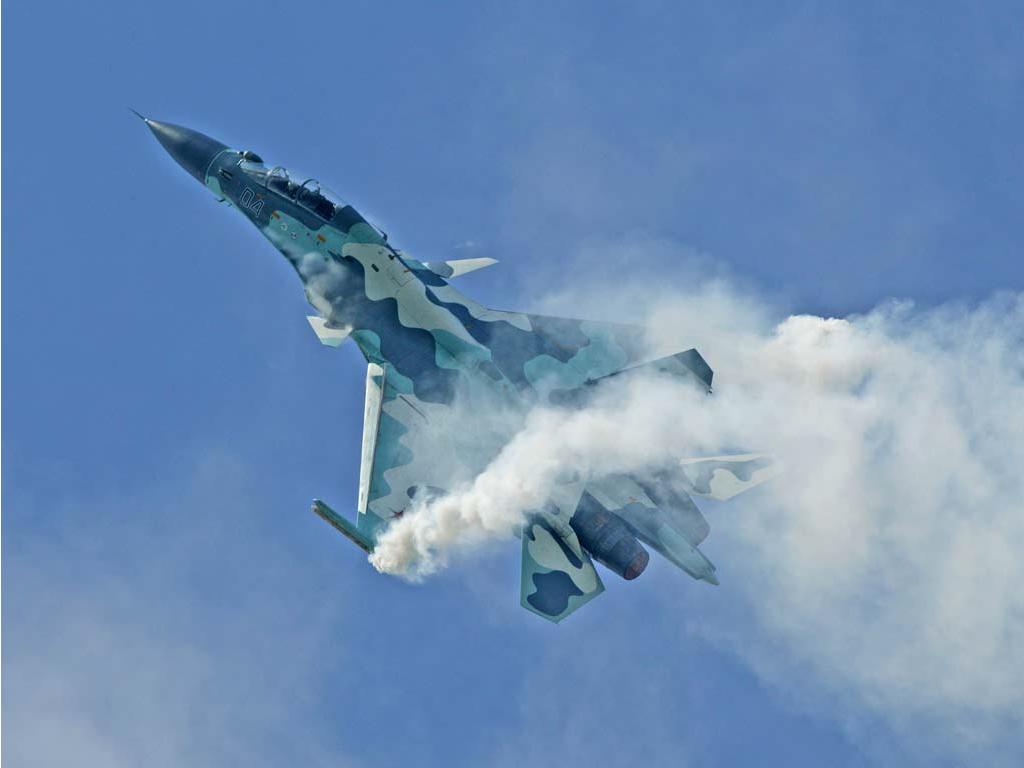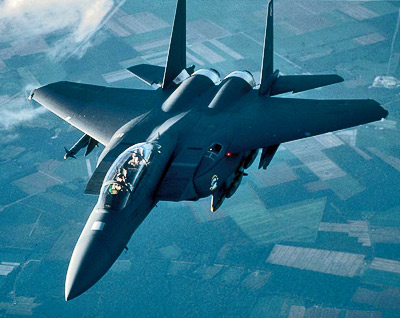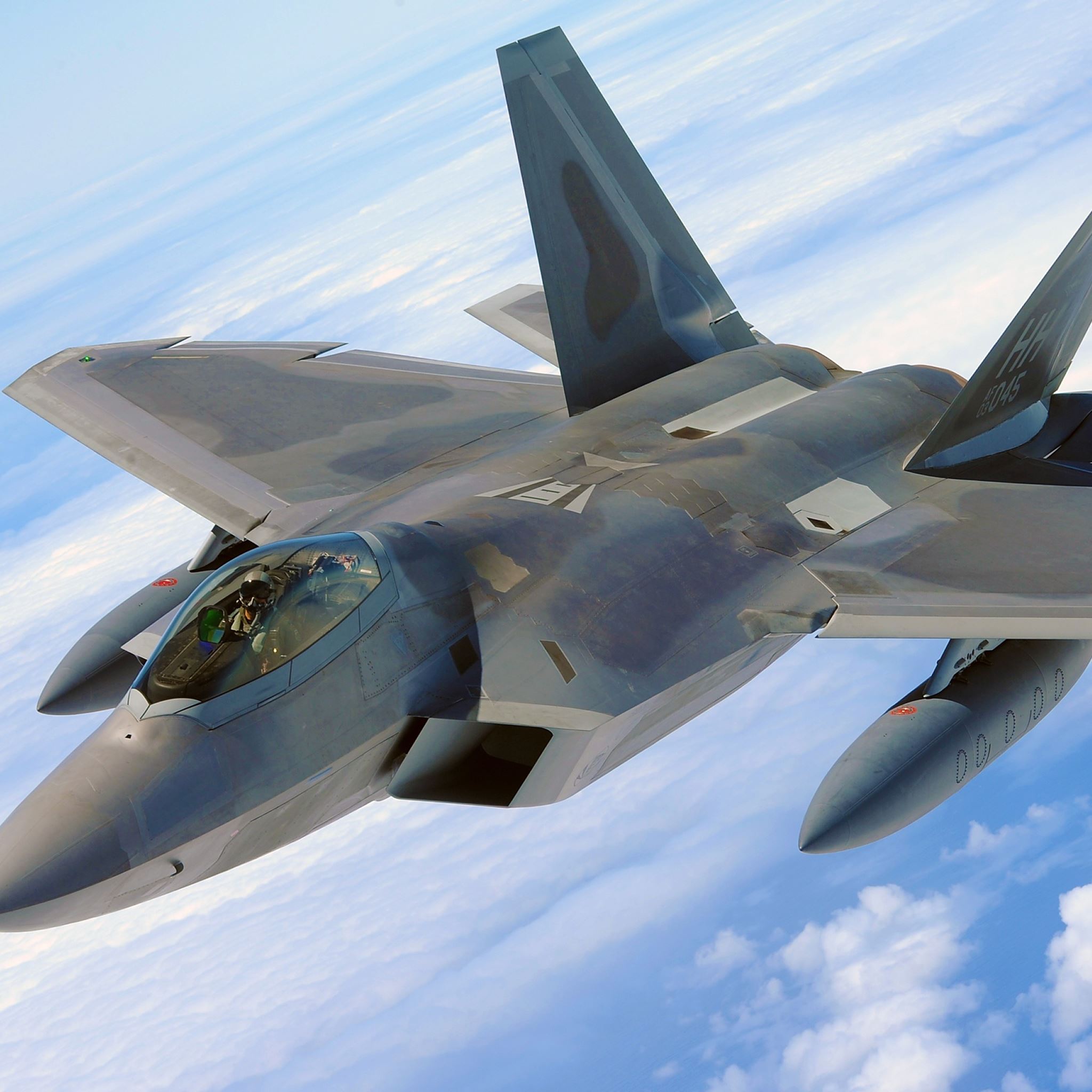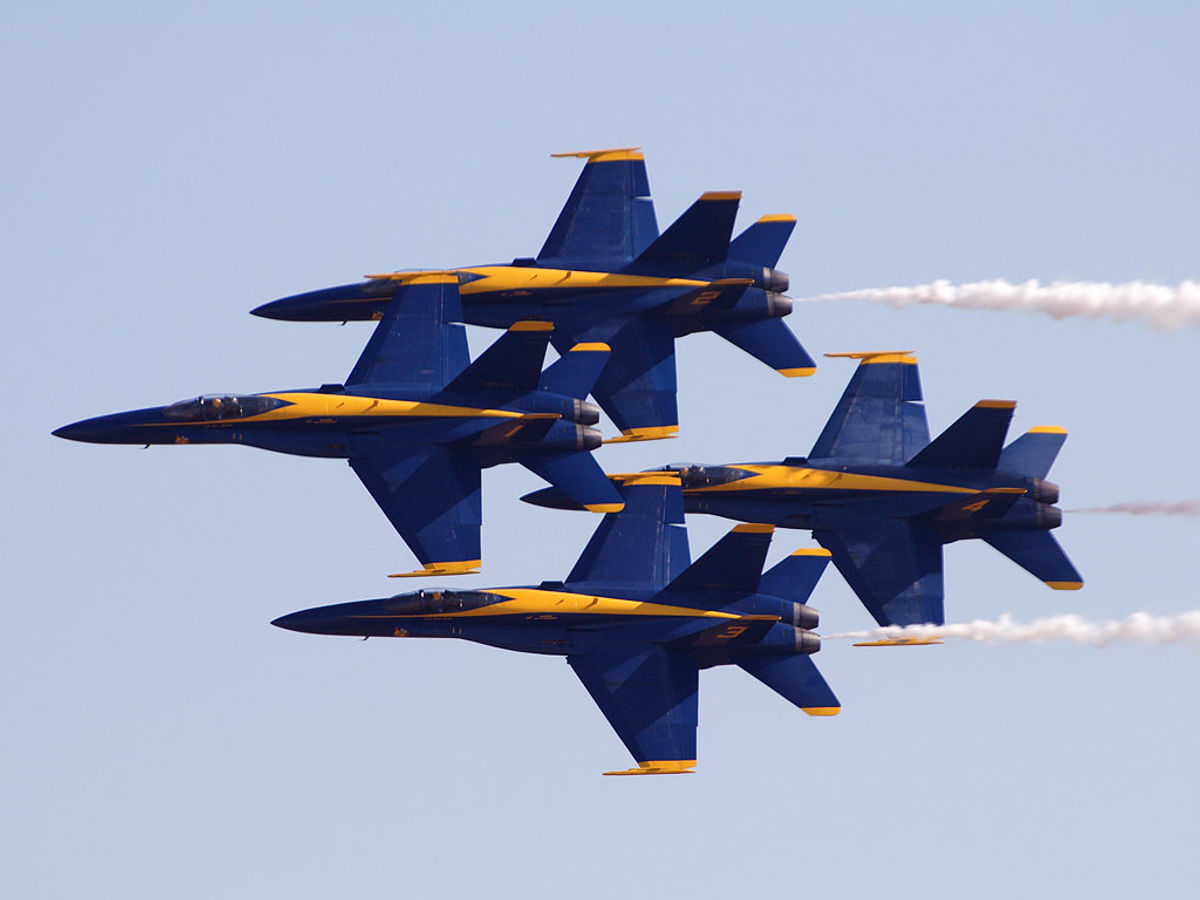Military Fighter Jets Biography
Fighter technology advanced rapidly during the Second World War. Piston-engines, which powered the vast majority of World War II fighters, grew more powerful: at the beginning of the war fighters typically had engines producing between 1,000 hp (750 kW) and 1,400 hp (1,000 kW), while by the end of the war many could produce over 2,000 hp (1,500 kW). For example, the Spitfire, one of the few fighters in continuous production throughout the war, was in 1939 powered by a 1,030 hp (770 kW) Merlin II, while variants produced in 1945 were equipped with the 2,035 hp (1,517 kW) Griffon 61. Nevertheless, these fighters could only achieve modest increases in top speed due to problems of compressibility created as aircraft and their propellers approached the sound barrier, and it was apparent that propeller-driven aircraft were approaching the limits of their performance. German jet and rocket powered fighters entered combat in 1944, although too late to impact the war's outcome.
P-51D-5NA 44-13357 of 8th AF / 361st FG / 374th FS
World War II fighters also increasingly featured monocoque construction, which improved their aerodynamic efficiency while also adding structural strength. Laminar flow wings, which improved high speed performance, also came into use on fighters such as the P-51, while the Messerschmitt Me 262 and the Messerschmitt Me 163 featured swept wings that dramatically reduced drag at high subsonic speeds.
Focke-Wulf Fw 190D-9 fighter-bomber
Armament also advanced during the war. The rifle-caliber machine guns that were common on prewar fighters could not easily down the more rugged warplanes of the era. Air forces began to replace or supplement them with cannons, which fired explosive shells that could blast a hole in an enemy aircraft—rather than relying on kinetic energy from a solid bullet striking a fuel line, control cable, pilot, etc. Cannons could bring down even heavy bombers with just a few hits, but their slower rate of fire made it difficult to hit fast moving fighters in a dogfight. Eventually, most fighters mounted cannons, sometimes in combination with machine guns.
German Bf 110G-4 night fighter with nose-mounted radar at the RAF Museum in London
The British epitomized this shift. Their standard early war fighters mounted eight .303-inch (7.7 mm) calibre machine guns—whereas by mid-war they often featured a combination of machine guns and 20 mm cannons, and late in the war often only cannons. The Americans, in contrast, had problems designing a native cannon design, so instead placed multiple .50 caliber (12.7 mm) heavy machine guns on their fighters. Fighters were also increasingly fitted with bomb racks and air-to-surface ordnance such as bombs or rockets beneath the their wings, and pressed into close air support roles as fighter-bombers. Although they carried less ordnance than light and medium bombers, they were cheaper to produce and maintain and their maneuverability made it easier for them to hit moving targets such as motorized vehicles. Moreover, if they encountered enemy fighters, their ordnance (which reduced lift and increased drag and therefore decreased performance) could be jettisoned and they could engage the enemy fighters, which eliminated the need for fighter escorts that bombers required. Heavily armed and sturdily constructed fighters such as Germany's Focke-Wulf Fw 190, Britain's Hawker Typhoon and Hawker Tempest, and America's P-40, Corsair, P-47 and P-38 all excelled as fighter-bombers, and since the Second World War ground attack has been an important secondary capability of many fighters.
A P-61 'Black Widow' of 419th Night Fighter Squadron
World War II also saw the first use of airborne radar on fighters. The primary purpose of these radars was to help night fighters locate enemy bombers and fighters. Because of the bulkiness of these radar sets, they could not be carried on conventional single-engined fighters and instead were typically retrofitted to larger heavy fighters or light bombers such as Germany's Messerschmitt Bf 110 and Junkers Ju 88, Britain's Mosquito and Beaufighter, and America's A-20, which then served as night fighters. The Northrop P-61 Black Widow, a purpose-built night fighter, was the only fighter of the war that incorporated radar into its original design. Britain and America cooperated closely in the development of airborne radar, and Germany's radar technology generally lagged slightly behind Anglo-American efforts, while other combatants developed few radar-equipped fighters.
[edit]Post–World War II period
Soviet Lavochkin La-9
Several prototype fighter programs begun early in 1945 continued on after the war and led to advanced piston-engine fighters that entered production and operational service in 1946. A typical example is the Lavochkin La-9 'Fritz', which was an evolution of the successful wartime Lavochkin La-7 'Fin'. Working through a series of prototypes, the La-120, La-126 and La-130, the Lavochkin design bureau sought to replace the La-7's wooden airframe with a metal one, as well as fit a laminar-flow wing to improve maneuver performance, and increased armament. The La-9 entered service in August 1946 and was produced until 1948; it also served as the basis for the development of a long-range escort fighter, the La-11 'Fang', of which nearly 1200 were produced 1947–1951. Over the course of the Korean War, however, it became obvious that the day of the piston-engined fighter was coming to a close and that the future would lie with the jet fighter.
A Ryan FR-1 Fireball of VF-66 at NAS North Island, 1945. This aircraft featured a piston engine for range and a jet engine in the tail for speed.
This period also witnessed experimentation with jet-assisted piston engine aircraft. La-9 derivatives included examples fitted with two underwing auxiliary pulsejet engines (the La-9RD) and a similarly mounted pair of auxiliary ramjet engines (the La-138); however, neither of these entered service. One that did enter service – with the U.S. Navy in March 1945 – was the Ryan FR-1 Fireball; production was halted with the war's end on VJ-Day, with only 66 having been delivered, and the type was withdrawn from service in 1947. The USAAF had ordered its first 13 mixed turboprop-turbojet-powered pre-production prototypes of the Consolidated Vultee XP-81 fighter, but this program was also canceled by VJ Day, with 80% of the engineering work completed.
Fighter technology advanced rapidly during the Second World War. Piston-engines, which powered the vast majority of World War II fighters, grew more powerful: at the beginning of the war fighters typically had engines producing between 1,000 hp (750 kW) and 1,400 hp (1,000 kW), while by the end of the war many could produce over 2,000 hp (1,500 kW). For example, the Spitfire, one of the few fighters in continuous production throughout the war, was in 1939 powered by a 1,030 hp (770 kW) Merlin II, while variants produced in 1945 were equipped with the 2,035 hp (1,517 kW) Griffon 61. Nevertheless, these fighters could only achieve modest increases in top speed due to problems of compressibility created as aircraft and their propellers approached the sound barrier, and it was apparent that propeller-driven aircraft were approaching the limits of their performance. German jet and rocket powered fighters entered combat in 1944, although too late to impact the war's outcome.
P-51D-5NA 44-13357 of 8th AF / 361st FG / 374th FS
World War II fighters also increasingly featured monocoque construction, which improved their aerodynamic efficiency while also adding structural strength. Laminar flow wings, which improved high speed performance, also came into use on fighters such as the P-51, while the Messerschmitt Me 262 and the Messerschmitt Me 163 featured swept wings that dramatically reduced drag at high subsonic speeds.
Focke-Wulf Fw 190D-9 fighter-bomber
Armament also advanced during the war. The rifle-caliber machine guns that were common on prewar fighters could not easily down the more rugged warplanes of the era. Air forces began to replace or supplement them with cannons, which fired explosive shells that could blast a hole in an enemy aircraft—rather than relying on kinetic energy from a solid bullet striking a fuel line, control cable, pilot, etc. Cannons could bring down even heavy bombers with just a few hits, but their slower rate of fire made it difficult to hit fast moving fighters in a dogfight. Eventually, most fighters mounted cannons, sometimes in combination with machine guns.
German Bf 110G-4 night fighter with nose-mounted radar at the RAF Museum in London
The British epitomized this shift. Their standard early war fighters mounted eight .303-inch (7.7 mm) calibre machine guns—whereas by mid-war they often featured a combination of machine guns and 20 mm cannons, and late in the war often only cannons. The Americans, in contrast, had problems designing a native cannon design, so instead placed multiple .50 caliber (12.7 mm) heavy machine guns on their fighters. Fighters were also increasingly fitted with bomb racks and air-to-surface ordnance such as bombs or rockets beneath the their wings, and pressed into close air support roles as fighter-bombers. Although they carried less ordnance than light and medium bombers, they were cheaper to produce and maintain and their maneuverability made it easier for them to hit moving targets such as motorized vehicles. Moreover, if they encountered enemy fighters, their ordnance (which reduced lift and increased drag and therefore decreased performance) could be jettisoned and they could engage the enemy fighters, which eliminated the need for fighter escorts that bombers required. Heavily armed and sturdily constructed fighters such as Germany's Focke-Wulf Fw 190, Britain's Hawker Typhoon and Hawker Tempest, and America's P-40, Corsair, P-47 and P-38 all excelled as fighter-bombers, and since the Second World War ground attack has been an important secondary capability of many fighters.
A P-61 'Black Widow' of 419th Night Fighter Squadron
World War II also saw the first use of airborne radar on fighters. The primary purpose of these radars was to help night fighters locate enemy bombers and fighters. Because of the bulkiness of these radar sets, they could not be carried on conventional single-engined fighters and instead were typically retrofitted to larger heavy fighters or light bombers such as Germany's Messerschmitt Bf 110 and Junkers Ju 88, Britain's Mosquito and Beaufighter, and America's A-20, which then served as night fighters. The Northrop P-61 Black Widow, a purpose-built night fighter, was the only fighter of the war that incorporated radar into its original design. Britain and America cooperated closely in the development of airborne radar, and Germany's radar technology generally lagged slightly behind Anglo-American efforts, while other combatants developed few radar-equipped fighters.
[edit]Post–World War II period
Soviet Lavochkin La-9
Several prototype fighter programs begun early in 1945 continued on after the war and led to advanced piston-engine fighters that entered production and operational service in 1946. A typical example is the Lavochkin La-9 'Fritz', which was an evolution of the successful wartime Lavochkin La-7 'Fin'. Working through a series of prototypes, the La-120, La-126 and La-130, the Lavochkin design bureau sought to replace the La-7's wooden airframe with a metal one, as well as fit a laminar-flow wing to improve maneuver performance, and increased armament. The La-9 entered service in August 1946 and was produced until 1948; it also served as the basis for the development of a long-range escort fighter, the La-11 'Fang', of which nearly 1200 were produced 1947–1951. Over the course of the Korean War, however, it became obvious that the day of the piston-engined fighter was coming to a close and that the future would lie with the jet fighter.
A Ryan FR-1 Fireball of VF-66 at NAS North Island, 1945. This aircraft featured a piston engine for range and a jet engine in the tail for speed.
This period also witnessed experimentation with jet-assisted piston engine aircraft. La-9 derivatives included examples fitted with two underwing auxiliary pulsejet engines (the La-9RD) and a similarly mounted pair of auxiliary ramjet engines (the La-138); however, neither of these entered service. One that did enter service – with the U.S. Navy in March 1945 – was the Ryan FR-1 Fireball; production was halted with the war's end on VJ-Day, with only 66 having been delivered, and the type was withdrawn from service in 1947. The USAAF had ordered its first 13 mixed turboprop-turbojet-powered pre-production prototypes of the Consolidated Vultee XP-81 fighter, but this program was also canceled by VJ Day, with 80% of the engineering work completed.
Military Fighter Jets
Military Fighter Jets
Military Fighter Jets
Military Fighter Jets
Military Fighter Jets
Military Fighter Jets
Military Fighter Jets
Military Fighter Jets
Military Fighter Jets
Military Fighter Jets
Military Fighter Jets
Military Fighter Jets
Military Fighter Jets
Military Fighter Jets
Military Fighter Jets
Military Fighter Jets
Military Fighter Jets
Military Fighter Jets
Military Fighter Jets
Military Fighter Jets




















No comments:
Post a Comment